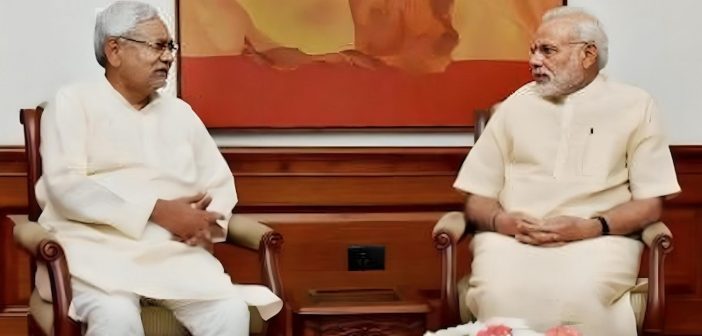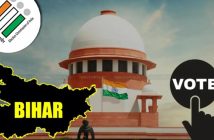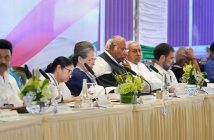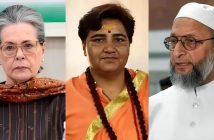As Bihar gears up for the upcoming elections in 2025, a seat‑sharing breakthrough has emerged in the NDA. Reports suggest that the BJP and JD(U) will contest almost equal seats in the Bihar elections 2025, under a new BJP-JD (U) seat-sharing formula. Meanwhile, Chirag Paswan’s LJP (Ram Vilas) may secure around twenty seats, far fewer than his initial demand. The unfolding dynamics within the NDA alliance in Bihar reflect strategic recalibrations. The balance of power, leadership roles, and caste equations are poised to shape the most contested 2025 Bihar general election dates.
In the latest twist in Bihar’s political chessboard, reports indicate that the BJP JD(U) seat-sharing Bihar elections pact is likely to feature both major constituents contesting nearly equal seats in the upcoming elections in Bihar 2025. Sources say the tally could hover around 100 to 105 seats each out of the 243‑member Assembly. At the same time, Chirag Paswan’s Lok Janshakti Party (Ram Vilas) may settle for 20 seats — roughly half his original demand. This strategic alignment signals high‑stakes negotiation in the Bihar assembly polls. With internal dynamics between Nitish Kumar and Chirag Paswan, plus stakes for caste groups and regional vote banks, the arrangement frames a crucial pre‑election narrative ahead of the 2025 Bihar general election dates.
Seat‑Sharing Formula
Reports from The Indian Express suggest that the BJP and JD(U) have nearly agreed to contest equal numbers of seats in the Bihar assembly polls, possibly around 100‑105 each. This balanced distribution underscores a BJP JD(U) seat-sharing model that acknowledges both parties’ influence.
Another source quantifies the formula more precisely: out of 243 seats, JD(U) might contest 105, BJP 104, and LJP (Ram Vilas) might receive 20, with the remainder going to HAM and RLM.
Role of Chirag Paswan and LJP (Ram Vilas)
Chirag Paswan initially demanded around 40 seats, citing his party’s strong performance in the recent Lok Sabha polls. However, insiders indicate a compromise, reducing the number to 20–25 seats.
Within the NDA alliance in Bihar, LJP (RV) remains an influential partner. It recently launched the Chirag ka Chaupal campaign to boost public engagement and reinforce its position ahead of the Bihar elections 2025.
NDA Alliance Strategy
The seat arrangement appears to calibrate caste equations and alliance hierarchy. JD(U) is given a slight edge to reinforce its senior partner image. Both the BJP and the JD(U) contest over 100 seats to cover key constituencies strategically.
This model mirrors past patterns but signals a more balanced approach than in 2020, when the BJP contested 110 seats, JD(U) 115, LJP hundreds independently, and other allies like VIP and HAM held separate pockets.
Internal Dynamics
Negotiations have been sensitive. JD(U) still seeks an “elder brother” role, while BJP balances its national clout with state-level pragmatism. Chirag’s seat demand and aggressive stance added complexity.
Leaders, including Amit Shah, JP Nadda, Nitish Kumar, and Chirag Paswan, are reportedly involved in delicate bargaining. BJP reportedly avoids alienating Chirag even at the cost of giving more seats from the BJP’s share
Opposition Standpoint
The INDIA bloc remains fragmented. The decisive BJP JD(U) seat sharing in the Bihar elections may weaken the opposition’s ability to counter-balance in key regions. Internal discord in INDIA, particularly seat-sharing woes, further disadvantages them.
The NDA’s unity strengthens its narrative. Meanwhile, LJP’s assertion of autonomy—though inside NDA—reflects nuanced alliance calculations.
Electoral Impact
Equal seat shares help the NDA appeal to diverse constituencies. For the BJP, it consolidates upper-caste and urban voters; for the JD(U), it underlines rural and backwards-class strength, especially EBCs.
Chirag Paswan’s 20 seats focus on his core support, particularly among Paswan and Dalit voters. Strategic constituencies like Hajipur and Vaishali become pressure points.
Official Confirmation or Speculation
So far, the seat-sharing formula is based on media reports. The Indian Express first outlined the equal‑share scenario. No formal announcement has been made. Party spokespeople remain tight-lipped.
LJP (RV) leaders stress their independent identity within NDA, indicating ongoing negotiations rather than a final settlement.
Contextual Timeline
- Lok Sabha polls 2024 saw NDA allocate BJP 17, JD(U) 16, LJP (RV) 5 seats.
- The 2020 Assembly polls featured larger independent LJP participation and complex seat splits.
- Now, for the Bihar elections 2025, the focus is on stability and equal distribution among key NDA partners.
Conclusion
As Bihar heads toward its crucial assembly election 2025, the reported BJP JD(U) seat-sharing model reflects strategic alliance balancing, caste-based electoral planning, and internal negotiations. With Chirag Paswan adjusting expectations to around 20 seats, BJP and JD(U) ‘s near-equal claims underline shared stakes. Finalisation is pending, and all eyes are on party meetings and internal signals. The arrangement could significantly influence campaign messaging, constituency dynamics, and NDA’s overall performance in the polls.




